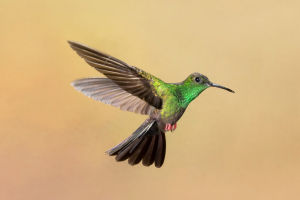The Ultramarine Flycatcher (Ficedula superciliaris) is a small yet stunningly beautiful bird that captivates with its vivid plumage and charming demeanor.
Found across the forests of the Himalayas and other parts of South Asia, this bird’s striking appearance and unique habits make it a favorite among birdwatchers and nature enthusiasts.
Distinctive Features
The Ultramarine Flycatcher is named after its brilliant blue coloring, reminiscent of the precious ultramarine pigment. The males are particularly eye-catching, with deep blue upperparts, a bright blue forehead, and a striking white underbelly that creates a vivid contrast. Females are more subdued, with grayish-blue upper parts and lighter underparts, but they still maintain an elegant beauty.
Habitat and Distribution
These birds are typically found in temperate forests, favoring the cool, high-altitude woodlands of the Himalayas and extending into regions like Nepal, Bhutan, and parts of northern India. During the breeding season, they prefer dense forests with plenty of cover, where they can find insects and raise their young. They migrate to lower altitudes and warmer climates in winter sometimes venturing as far south as peninsular India.
Feeding Habits
Ultramarine Flycatchers are insectivorous birds, meaning they primarily feed on insects and small invertebrates. They are skilled hunters, often catching prey mid-air with impressive agility. Watching them dart through the air is a captivating sight, as they twist and turn with remarkable speed and precision.
Breeding and Nesting
Breeding season for the Ultramarine Flycatcher generally occurs between April and July. The birds build their nests in tree cavities or rock crevices, using moss, feathers, and other soft materials to create a secure and comfortable home for their eggs. A typical clutch consists of 3-5 eggs, which are incubated by the female. Once the chicks hatch, both parents work tirelessly to feed and care for their young until they are ready to fledge.
Conservation Status
Currently, the Ultramarine Flycatcher is listed as "Least Concern" by the International Union for Conservation of Nature (IUCN). However, habitat loss due to deforestation and human encroachment remains a concern. Conservation efforts focused on protecting forest habitats are crucial to ensuring the survival of this dazzling bird and many others that share its environment.
Why They Fascinate Birdwatchers
The Ultramarine Flycatcher’s vivid coloration and lively behavior make it a prized sight for birdwatchers. Spotting a male in full breeding plumage flitting among the branches is an unforgettable experience, as the deep blue feathers almost seem to glow against the greenery. Their melodious calls, consisting of a series of high-pitched, musical notes, add an enchanting soundtrack to forest walks.
Lykkers, The Ultramarine Flycatcher is a symbol of the beauty and diversity of the world’s avian species. With its striking colors, agile flight, and melodic song, this little bird brings joy to all who are lucky enough to encounter it. Protecting the forests where it thrives will ensure that future generations can also marvel at this incredible creature.
Ultramarine Flycatcher facts White-browed Blue Flycatcher
Video by Amazing Planet!


